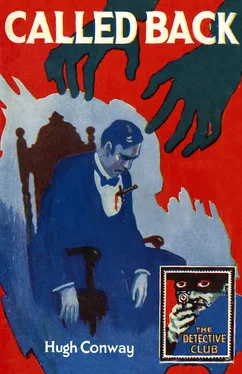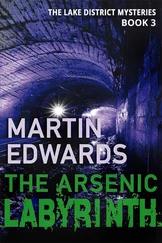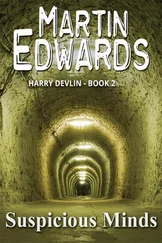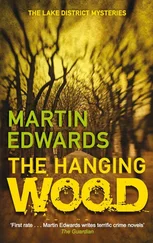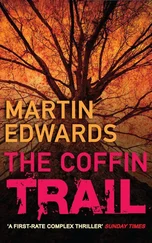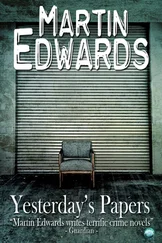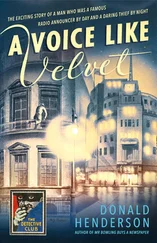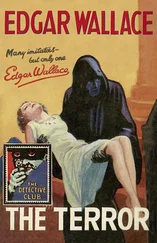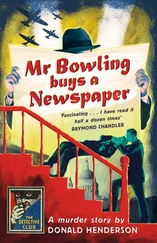Published by COLLINS CRIME CLUB
An imprint of HarperCollins Publishers Ltd
1 London Bridge Street
London SE1 9GF
www.harpercollins.co.uk
First published in Great Britain by J. W. Arrowsmith 1883
Published by The Detective Story Club Ltd
for Wm Collins Sons & Co. Ltd 1929
Introduction © Martin Edwards 2015
Cover design © HarperCollins Publishers Ltd 1929, 2015
A catalogue copy of this book is available from the British Library.
This novel is entirely a work of fiction. The names, characters and incidents portrayed in it are the work of the author’s imagination. Any resemblance to actual persons, living or dead, events or localities is entirely coincidental.
All rights reserved under International and Pan-American Copyright Conventions. By payment of the required fees, you have been granted the non-exclusive, non-transferable right to access and read the text of this e-book on screen. No part of this text may be reproduced, transmitted, down-loaded, decompiled, reverse engineered, or stored in or introduced into any information storage and retrieval system, in any form or by any means, whether electronic or mechanical, now known or hereinafter invented, without the express written permission of HarperCollins.
Source ISBN: 9780008137113
Ebook Edition © August 2015 ISBN: 9780008137120
Version: 2015-07-06
Contents
Cover
Title Page
Copyright Published by COLLINS CRIME CLUB An imprint of HarperCollins Publishers Ltd 1 London Bridge Street London SE1 9GF www.harpercollins.co.uk First published in Great Britain by J. W. Arrowsmith 1883 Published by The Detective Story Club Ltd for Wm Collins Sons & Co. Ltd 1929 Introduction © Martin Edwards 2015 Cover design © HarperCollins Publishers Ltd 1929, 2015 A catalogue copy of this book is available from the British Library. This novel is entirely a work of fiction. The names, characters and incidents portrayed in it are the work of the author’s imagination. Any resemblance to actual persons, living or dead, events or localities is entirely coincidental. All rights reserved under International and Pan-American Copyright Conventions. By payment of the required fees, you have been granted the non-exclusive, non-transferable right to access and read the text of this e-book on screen. No part of this text may be reproduced, transmitted, down-loaded, decompiled, reverse engineered, or stored in or introduced into any information storage and retrieval system, in any form or by any means, whether electronic or mechanical, now known or hereinafter invented, without the express written permission of HarperCollins. Source ISBN: 9780008137113 Ebook Edition © August 2015 ISBN: 9780008137120 Version: 2015-07-06
Introduction
Chapter I: In Darkness and in Danger
Chapter II: Drunk or Dreaming
Chapter III: The Fairest Sight of All
Chapter IV: Not for Love or Marriage
Chapter V: By Law, Not Love
Chapter VI: Unsatisfactory Answers
Chapter VII: Claiming Relationship
Chapter VIII: Called Back
Chapter IX: A Black Lie
Chapter X: In Search of the Truth
Chapter XI: A Hell Upon Earth
Chapter XII: The Name of the Man
Chapter XIII: A Terrible Confession
Chapter XIV: Does She Remember?
Chapter XV: From Grief to Joy
The Detective Story Club
About the Publisher
CALLED BACK, Hugh Conway’s most famous novel, was first published in 1883 as a ‘Christmas annual’ by a small Bristol publishing firm. The story rapidly earned such popular acclaim that ‘many prophesied the displacement of Wilkie Collins by the new star’, according to one of Collins’ obituaries. Certainly, the book caused much more of a sensation than the first detective novel of a young Scottish writer four years later, A Study in Scarlet . Yet today, Conway’s name is much less well-known than Wilkie Collins’, let alone Arthur Conan Doyle’s. So it is easy to forget that his reputation endured long after his premature death in 1885. Called Back entertained a later generation of readers when it was republished in the Detective Story Club series in 1929, and was also filmed twice, in 1914 and 1933.
John Sutherland, an academic expert on Victorian fiction, has neatly summarised Called Back as a ‘sensational novel of murder, amnesia, Siberian-exile, political assassination and detection’. Who could possibly resist such a confection? The main events of the story take place in the 1860s; they are recalled later by the narrator, Gilbert Vaughan, a respectable Englishman with a hatred of mysteries ‘who has a romance hidden away beneath an outwardly prosaic life’.
At the age of 25, Vaughan is struck blind. Leaving his house in London one night, he becomes lost, and witnesses a mysterious killing. Confident that they cannot be recognised, the perpetrators allow him to escape with his life. Vaughan later recovers his sight and, on a trip to Italy, encounters a beautiful girl with whom he promptly falls in love. Their romance fails to progress, but he soon comes across her again in London, where he also meets Dr Manuel Ceneri, who claims to be her uncle. Gradually, a dastardly scheme unfolds. Vaughan is not a wholly likeable man, but his persistence in his quest for the truth makes him a worthy protagonist. The long arm of coincidence reaches out time and again during the course of the narrative, prompting Vaughan’s occasional exclamation: ‘It was Fate!’ But the book is written with Victorian verve.
The book rapidly sold more than a quarter of a million copies, making a fortune for its publisher, J. W. Arrowsmith. A paper-covered edition costing one shilling became the most renowned of the so-called ‘shilling shockers’ popular at the time. The story was also widely translated. Together with Joseph Comyns Carr, a prominent drama critic, theatre manager and playwright, Conway adapted the book for the stage, and long runs in both London and the provinces followed. There was even a burlesque version called The Scalded Back! Towards the end of her life, Emily Dickinson enjoyed reading the novel, which she described as ‘a haunting story’; so taken was she with the phrase Called Back that it was added to her tombstone. The Times compared Stevenson’s Strange Case of Dr Jekyll and Mr Hyde to Called Back , and while the reviewer admired Stevenson’s story, he expressed doubt as to whether it would enjoy as much popular success as Conway’s.
Conway threw himself into writing, with encouragement from Wilkie Collins himself, and his later books included two more ‘Christmas annuals’, notably the thriller Dark Days , which would also eventually feature in the Detective Story Club. His rise to fame had been meteoric, but sadly, it did not last. Having developed symptoms of TB, he travelled to the French Riviera to recuperate, but was diagnosed with typhoid fever, and died shortly afterwards at Monte Carlo, aged just 37. It is indicative of the literary status that he achieved in a short time that, after his death, Arrowsmiths asked an author as eminent as Wilkie Collins to write their next ‘Christmas annual’; this resulted in The Guilty River , but it sold far less well than Called Back .
Conway’s real name was Frederick John Fargus, and he was born in Bristol in 1848, the son of an auctioneer. Youthful enthusiasm for the novels of Captain Marryat inspired an ambition to become a sailor; his pseudonym came from HMS Conway , a frigate stationed in the river Mersey and used as a school ship for the training of aspiring naval officers, where he spent some of his formative years. An accident suffered on board the Conway damaged his hearing, and led Fargus to pursue a career in the family firm whilst trying to establish himself as an author. In 1879, he published a volume of poetry, and a collection of short stories appeared two years later. He showed signs of developing into an accomplished exponent of supernatural stories as well as thrillers, and after his death, Comyns Carr wrote to The Times extolling his gifts; in his view, Called Back barely hinted at Fargus’ literary potential.
Читать дальше
